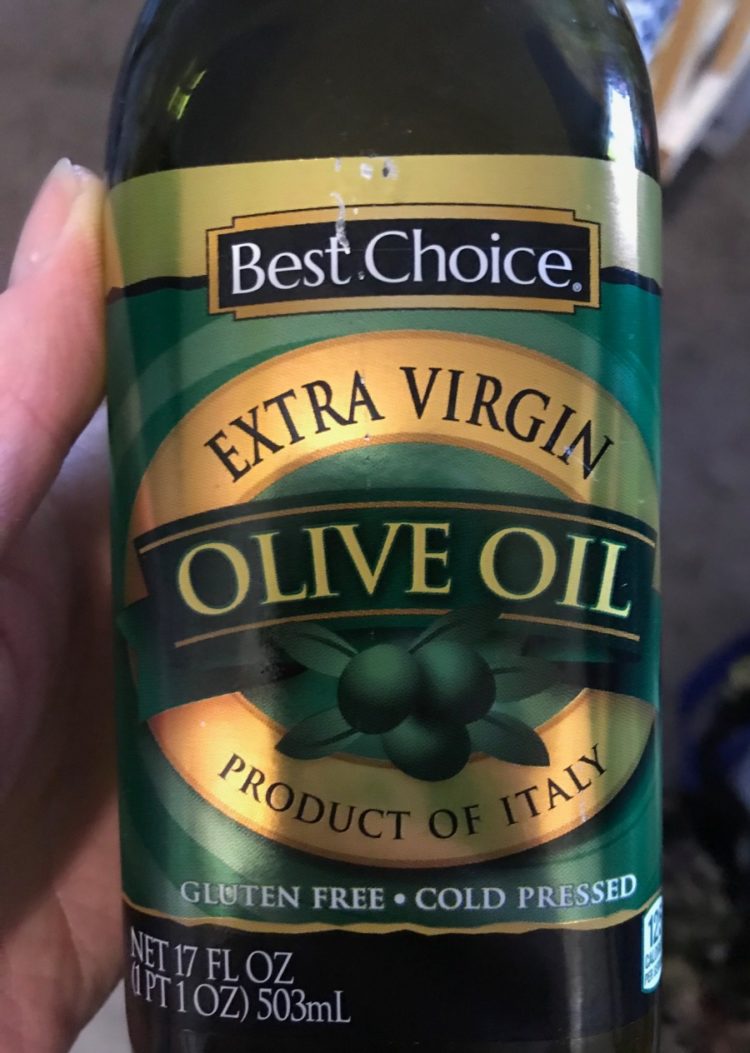Olive oil has a wonderful taste, and great health benefits, too – But what if you’re paying extra for oil that is NOT really from olives? The American Botanical Council warned in their latest email bulletin that most imported olive oil is really not from olives. (1/14/2020)
Why Do You Care if the Olive Oil is Fake?
You care because you are paying more money for an oil that supposedly has health benefits like Omega 9 EFA’s, and anti-inflammatory qualities. True olive oil most importantly does NOT contain high levels of “omega 6”, a substance that most of us have too much of from eating grains and beans in our own diets, and eating meat and dairy that have been fed the same.
In short, we are paying extra money for the additional health benefits, and trying to avoid the health negatives of other vegetable oils.
I’ll give you later in this article a few ways to test your olive oil yourself, easily, at home. (No more fooling you!)
From the article Paucity of testing ensures olive oil adulteration continues to plague market, BAPP bulletin says:
(link from the ABC newsletter)
Most olive oil is “adulterated with rape seed or soybean.”
In one 2010 University of California Davis study, 69% of imported oils and 10% of California olive oils could not pass the EVOO (extra virgin olive oil) sensory specs. [This means they smelt and/or tasted rancid, or not like olive oil] (source just above)
In this second article from Whole Foods Magazine (not related to the store), they agreed that food fraud was rampant:
Adulteration of olive oil includes mainly substitution with lower-cost vegetable oils or lower-grade olive oil, and inaccurate country-of-origin labeling.
Apparently, olive oil is popular for the supplement and cosmetic industry, as well as food. So the fraud is more widespread.
And from the TV show website, FoodOver50.com, report the same. Here’s the Pres. of the California Olive Oil Company (which admittedly wants to sell you olive oil from California):
According to Thom, foreign olive oils have to meet high standards within their own countries, but if the product is shipped abroad it needn’t meet any standard of purity or freshness. These foreign olive oils may be partially adulterated with less costly vegetable oils. Also, according to C.O.O.C testing statistics, over 50% of the imported grocery store olive oils are rancid before they are ever opened. This is most often due to extended international transit and warehousing.
I have tasted this – I have repeatedly bought bottles of “olive oil” for $8-12 and had them taste terrible. And then I FEEL terrible, after eating this supposed health food for my “health.” I have returned several bottles to the store after repeating this scenario several times. Grrr!
How to Test Your Olive Oil at Home
How do you protect yourself? It’s easy to test your olive oil at home, with no cost to yourself. Just place an oil sample or the entire olive oil bottle in the fridge for about 40 minutes. Real olive oil should solidify in cold temperatures. Does yours? Does some of it solidify, or none of it?

I just did this today from a brand called Best Choice Extra Virgin Olive Oil. Did it pass?
Not at all! My tiny jar sample had no solid oil at all in the cold test, and it was left overnight in the fridge. FAIL!
I especially like how the label reads “Cold Pressed” on there. It means heat wasn’t used to make the oil, which can help true olive oil to not be rancid.

I believe that I did another fridge test on olive oil bought at Target about one year ago. I saved it, meaning to have it tested by a commercial food tester. More about that later…
The Taste Test
There’s another easy way to test your olive oil. It should taste like olive! What I mean is that it should have some flavor over no flavor. (Most other vegetable oils are deodorized to stop the “animal” in us from backing away from chemically separated and heat treated (= rancid and carcinogenic) vegetable oils that smell and taste bad. [read more in Nourishing Traditions book]


